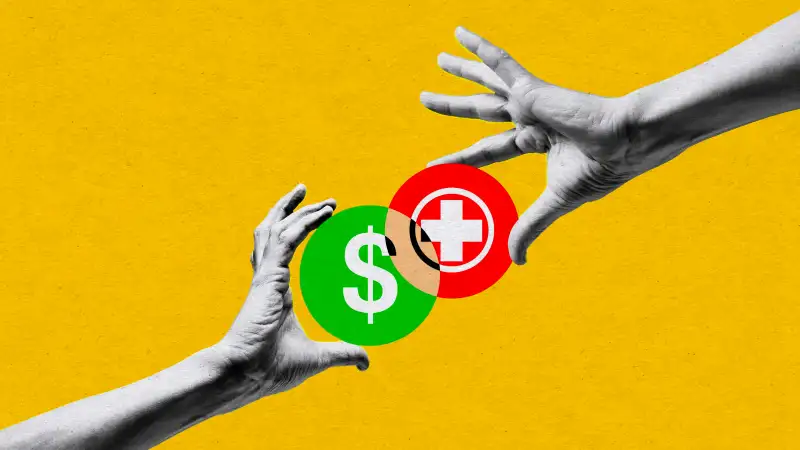3 Ways to Cut Your Spending on Workplace Health Insurance

Inflation had a bright side for some people — raises to account for higher prices — but there’s a catch. Prices for health insurance also went up, so you might have to pay more for a 2023 plan. Average costs per employee will reach $13,800 in 2023, according to Aon, the professional services firm. That’s more than twice the 3% increase companies saw last year, though it is well below the current inflation index.
As open enrollment for many employer-provided health insurance plans begins, take a close look at the offerings. Sticking with the same plan you used before is not always the best choice. In fact, most people are terrible at picking the health plan that gives them good coverage at the cheapest price, according to several studies. Though it sounds counterintuitive, simply choosing the plan with the higher premium and lower deductible may not be your best bet.
The following strategies challenge some common beliefs about health insurance plans. and they can help you save money on the health insurance your employer offers.
High deductibles may be lower than you think
Employer-sponsored high-deductible plans may in fact give you a deductible that’s lower than some plans that aren’t labeled high-deductible. The advantage of high-deductible plans is that they generally qualify for a health savings account (HSA). As long as the plan has a minimum deductible of $1,500 for an individual and $3,000 for a family in 2023, it qualifies for an HSA.
Of course, your employer might set the deductible higher in exchange for the lower premiums you usually pay with a high-deductible plan. Run the numbers using a calculator like this one from HSA provider Lively, so you can compare estimated health care use, premiums and deductibles across different plans.
Consider saving in an HSA
What makes a health savings account (HSA) so magical is that it’s the only triple tax-advantaged investment account. First, money goes into your account pre-tax. The money you invest within that account grows tax-free. Finally, money is withdrawn tax-free when used for qualified medical expenses. Contributing can help you reduce your taxable income and give you a valuable medical emergency fund.
How HSA contribution limits work
Your employer can contribute to your HSA, just like they can to a workplace retirement plan. Also similar to your retirement plan, people over age 55 can make catch-up contributions. But unlike with a 401(k), your employer contributions are part of the preset limit. If your employer contributes to an HSA, you contribute less to max out the account.
| 2022 | 2023 | |
| Individual | $3,650 | $3,850 |
| Family | $7,300 | $7,750 |
| Catch-up contribution | $1,000 | $1,000 |
There’s no time limit for using the HSA. That means you can keep receipts for eligible medical expenses and reimburse yourself several years later, after your HSA investments have grown.
How to compare premiums and deductibles
First, narrow the choices by filtering out any deal breakers. For instance, you might want to see providers that certain networks don't work with.
Three main numbers are important: the annual premium, the deductible and any employer contribution to an HSA or FSA.
Many employers will contribute a certain amount annually to a health savings account, or flexible savings account on your behalf if you choose a high-deductible plan.
If you have this option, you need to find out the actual contribution amount the employer will make on your behalf and factor that in using the calculator.
Comparing a preferred provider organization plan (PPO) with a high-deductible plan is not a completely apples-to-apples comparison. For one thing, high-deductible plans have lower premiums but higher deductibles. For another, high-deductible plans generally allow you to save pre-tax dollars in a spending account, and employers often contribute money to that account for you.
Use a calculator, like the one from health savings account provider HSA Bank, to compare different types of health insurance plans. You put in how much you’d pay for premiums, the amount of the deductible you’ll have to meet, and other factors such as prescriptions, whether you pay for them, and any coinsurance.
Depending on how much health care you use, the difference can be stark.
Look at outside plans
You might want to consider options other than the ones your employer offers. If you have a partner who can cover you, that might offer better, cheaper coverage than your employer's plan. Depending on the employer’s policies, you may not have to be married.
You are not eligible for a subsidy on a marketplace plan if your employer coverage meets minimum value standards, but even without a subsidy, the coverage may be better for less, depending on your state and your income. Your family members, however, might still qualify for a marketplace plan and premium assistance. You can check your eligibility and compare plans by visiting healthcare.gov.
More from Money:
5 Cost-Cutting Tips for Choosing a Health Insurance Plan on the Marketplace
'Nobody Comes to This Casino and Wins.' Meet the Podcaster Taking on the Health Insurance Industry
The Lifetime Cost of Health Care Averages $700,000 for Many Insured Americans

